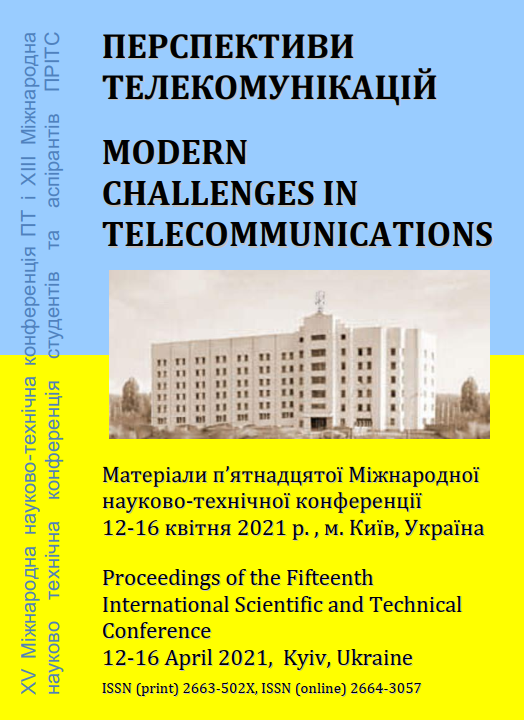МЕТОДИ І ТЕХНОЛОГІЇ ПОЗИЦІОНУВАННЯ ДЛЯ ВІРТУАЛЬНОЇ РЕАЛЬНОСТІ
Ключові слова:
МЕТОДИ, ТЕХНОЛОГІЇ, ВІРТУАЛЬНА РЕАЛЬНОСТЬАнотація
Метою даної роботи є дослідження основних методів позиціонування VR систем у просторі, безпосередній аналіз існуючих комерційних VR шоломів та виокремлення основних моментів, що можуть сприяти подальшому розвитку таких систем.Посилання
Choi, SangSu, Kiwook Jung, and Sang Do Noh (2015). "Virtual reality applications in manufacturing industries: Past research, present findings, and future directions". Concurrent Engineering. 1063293X14568814.
Кармадонов В.Ю. “Методы отслеживания положения в виртуальной реальности” Журнал ‘Academy’ 2019.
The Complete Guide to Virtual Reality and the VR Industry. ‘The Guardian’ 2016.
##submission.downloads##
Опубліковано
2021-05-14
Як цитувати
Токаренко, М. Я. ., & Кравчук, С. О. . (2021). МЕТОДИ І ТЕХНОЛОГІЇ ПОЗИЦІОНУВАННЯ ДЛЯ ВІРТУАЛЬНОЇ РЕАЛЬНОСТІ. Збірник матеріалів Міжнародної науково-технічної конференції «ПЕРСПЕКТИВИ ТЕЛЕКОМУНІКАЦІЙ», 199–201. вилучено із https://conferenc-journal.its.kpi.ua/article/view/230713
Номер
Розділ
Безпроводові телекомунікаційні системи та технології, системи 5G, Інтернет речей
Ліцензія

Ця робота ліцензується відповідно до Creative Commons Attribution 4.0 International License.
Authors who submit to this conference agree to the following terms:a) Authors retain copyright over their work, while allowing the conference to place this unpublished work under a Creative Commons Attribution License, which allows others to freely access, use, and share the work, with an acknowledgement of the work's authorship and its initial presentation at this conference.
b) Authors are able to waive the terms of the CC license and enter into separate, additional contractual arrangements for the non-exclusive distribution and subsequent publication of this work (e.g., publish a revised version in a journal, post it to an institutional repository or publish it in a book), with an acknowledgement of its initial presentation at this conference.
c) In addition, authors are encouraged to post and share their work online (e.g., in institutional repositories or on their website) at any point before and after the conference.

